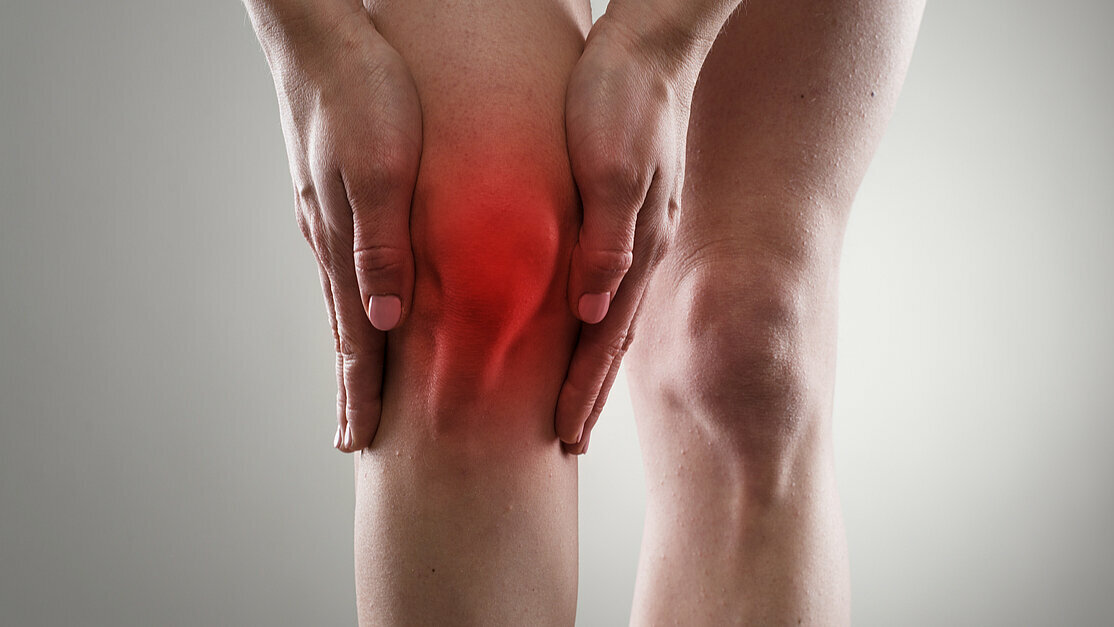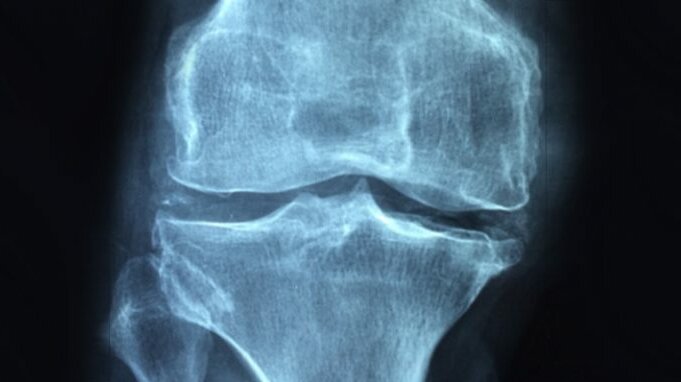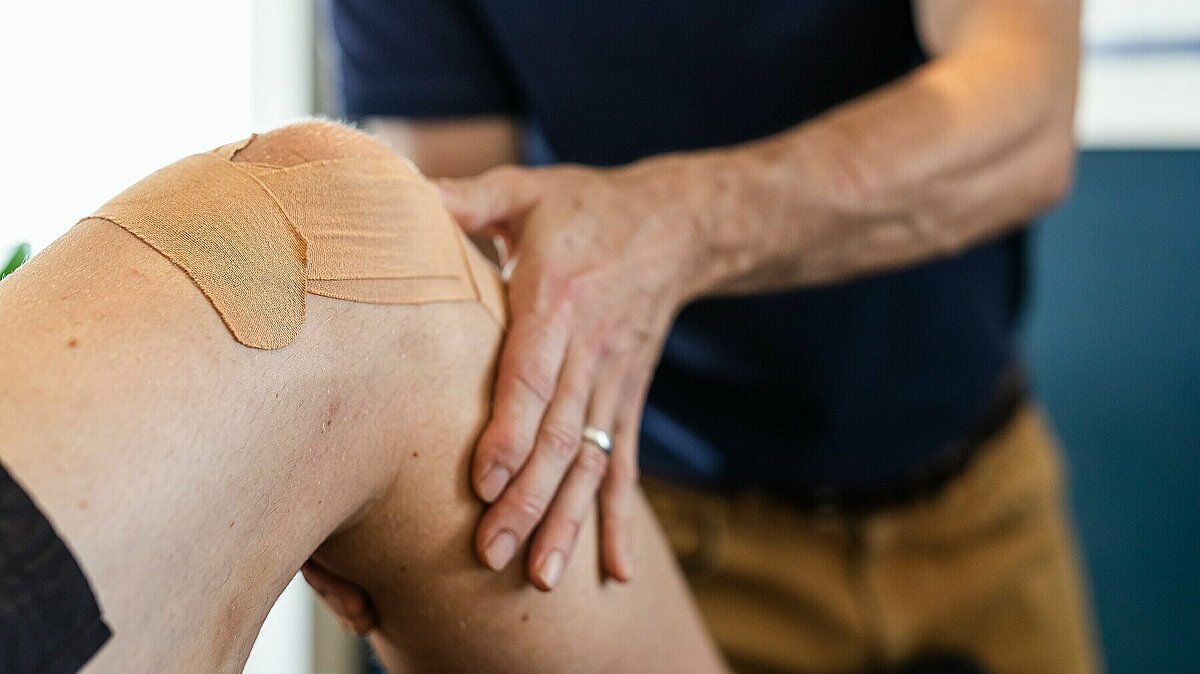DOWNLOAD YOUR $49 VOUCHER HERE
(scroll to the bottom of this page for more details).
It happened again last week... A new patient came to see me after having an MRI of his knee because of persistent pain. He’d been told the images showed his knee wasn’t good, that the cartilage was worn down and it was almost ‘bone on bone’ in there.
The words alone are enough to make most of us grimace reflexively. ‘Bone on bone’ sounds painful, horrible and hopeless.
That’s clearly how it seemed to this patient as he stared at his knee and tried to imagine what the future would be like. He expected ongoing pain, struggling up stairs with his knee feeling stiff every morning. He’d resigned himself to cutting back on activities he enjoyed to avoid aggravating his knee. He thought it was just a matter of time until he’d have to have a knee replacement.
“I guess it’s just ‘wear and tear’...a normal part of getting older,” he said, trying to come to terms with his fate.

This man was an active, outdoorsy type. He loved going hiking or spending the day at the beach with the family. He wanted to do lots of fun things with his grandchildren. But his knee was now down to ‘bone on bone’ so that kind of life looked like it was over.
That’s a heartbreaking state to be in. Especially when it’s based on false information.
Why words matter
The playground rhyme of ‘sticks and stones may break my bones but words will never hurt me’ is not actually true. Words have a profound influence on us.
It’s beginning to be recognised that some medical terms are actually harmful to the patient.
- When you’re overjoyed to finally be pregnant after years of trying, you don’t want to be described as having a ‘geriatric pregnancy’.
- If your baby isn’t gaining weight as expected despite your best efforts, it’s heartbreaking to hear that they’re ‘failing to thrive’.
- If you have a busy and interesting life while living with disability, it’s demeaning and reductionist to be labelled as ‘confined to a wheelchair’.
Those terms are laced with judgement or low expectations for the future. ‘Bone on bone’ falls into that category too.
The ‘nocebo effect’ of a diagnosis of ‘bone on bone’
Being told your knee osteoporosis is so bad that it’s ‘bone on bone’ is so mentally destructive it has been described as a ‘nocebo effect’ (1).
What does that mean? You’ve probably heard of the ‘placebo effect’, referring to the psychological benefit someone gains from a treatment, rather than the actual physiological benefit.
It’s something that has to be carefully controlled in drug trials so we know whether the medicine itself made a difference or the person’s belief that they were receiving treatment (that’s why some people are given dummy pills that look the same as the trial medicine).
The ‘nocebo effect’ is the placebo effect’s depressing twin. It refers to negative thinking that has a detrimental effect on your health.
Pouli et al studied people living with knee osteoarthritis, exploring the illness itself and the patients’ beliefs about treatment (2).
They found that ‘bone on bone’ descriptions:
- Are nocebic in effect
- May provide an inaccurate reflection of what is actually happening in the knee joint
- Potentially make people afraid of exercising or doing certain other activities (1).
To put it another way, referring to ‘bone on bone’ causes negativity, fear and avoidance of exercise. It decreases a person’s perceived control over their pain. And it creates a false narrative about knee osteoarthritis that makes people believe there’s a poor prognosis and no treatment, creating a sense of helplessness. Words matter. Other researchers agree (3).
A more positive approach to knee osteoarthritis
So, what’s really going on with your knee?
The MRI is not the whole story
We have incredible ways of looking into the human body now but we have to look at those findings as part of a bigger book, not the only chapter that matters.
If you send a bunch of over-40s for a knee MRI, the images can show that up to 40% have signs of osteoarthritis. That would surprise most of those people since they have no symptoms or perceived problems with their knee (3).
Yes, they may have some physical changes if you look carefully using modern investigative tools. But they feel fine, run fine and so, really, they are fine.

Understanding the rest of your knee’s story
If your scan showed that you do have osteoporosis of the knee, that’s important information. But it needs to be considered in the light of other factors like your:
- Pelvic alignment
- Tissue sensitivity
- Ability to load (put weight on) the joint.
Your body tries to compensate for painful or weak areas by recruiting help from elsewhere. It’s not a bad short-term strategy but it leads to fresh problems if it goes on for a long time.
Your pelvis may twist to avoid loading a sore knee, resulting in pelvic misalignment. Pelvic misalignment is, itself, a cause of knee pain, creating a vicious cycle. Your core strength may also suffer.
That’s why a holistic approach is so vital to treating knee osteoporosis. We want to contain the problem and then strengthen your knee.
Management: first move well, then move often
Exercise is a vital component of managing knee osteoarthritis. Indeed, exercise is as good as arthroscopy (knee surgery) for moderate to severe osteoarthritis (3).
If you’ve experienced the nocebic effect described above, you may feel very nervous about using your knee. That’s completely understandable. You can regain your confidence by learning which exercises are appropriate and when.
Dr Craig Liebenson, a rehabilitation and movement specialist says it’s like this:
- If you are at risk for knee arthritis, rest is NOT best
- Exercise is not risky...it’s how you go about that exercise which is key!
- Arthritis is not a ‘wear & tear’ problem
- It is a ‘no strain, no gain’ issue.
Preserving your knee doesn’t mean avoiding its use. It means using it in the right way so you can enjoy an active lifestyle.
And that’s where we can help.

How can we help?
At Windsor Chiropractic, we take a holistic approach to how the body works and responds to any weakness.
We know that your body will compensate around your knee. That’s why we don’t solely focus on your knee but on its supporting structures too. We aim to improve the function of everything around the knee so that it has the best chance of healing.
Our approach is to improve pelvic and lower limb alignment with chiropractic care, mobilisation and a number of other techniques to help improve your ability to move and exercise.
Your treatment plan may include:
- Manipulation (chiropractic adjustments) to balance the spine and pelvis
- Mobilisation to help reduce pain and improve knee function (1)
- Cold laser treatment to reduce pain and inflammation, and promote tissue repair.
Chiropractic may also improve the effects of exercise. To give you the best chance of regaining function, it’s important that you do your exercises in the correct order, mastering the basics before progressing to something harder. We can help with a suitable program.
There is hope for knee osteoarthritis even if it is supposedly ‘bone on bone’. We’d love to help you regain confidence in moving and feel more positive about your future.
DOWNLOAD a $49 VOUCHER which includes:
-
Thorough Initial Consultation & Report of Findings (first two visits, normally $165) at our Windsor or Stafford location.
-
Full Postural Assessment
-
X-rays if clinically indicated (covered by Medicare)
-
Chiropractic Treatments (T&Cs apply)
-
Specific Exercise & Ergonomic Advice
GET YOUR $49 VOUCHER HERE - Learn More...
If you’d like to learn more about knee pain, visit this page or email us at mail@windsorchiro.com.
References
- Effectiveness of manual therapies: the UK evidence report - PubMed (nih.gov)
- How to Enhance Exercise Rehab With Manipulation and Soft-Tissue Therapy (dynamicchiropractic.com)
- Why have knee surgery that's 'no better than placebo'? - Health & Wellbeing (abc.net.au)
DISCLAIMER: All content is created and published online for informational purposes only. It is not intended to be a substitute for professional medical advice and should not be relied on as health or personal advice. Always seek the guidance of your doctor or other qualified health professional with any questions you may have regarding your health or a medical condition.